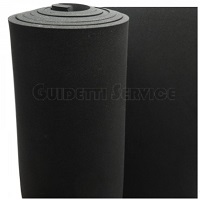GrapheneCA has reported that it is the sole provider for all of the graphene being used in a major commercial construction project that makes use of the miracle material currently underway in Mexico.
In a statement, the privately-owned graphene supplier and manufacturer, said the new convention center, Centro de Convenciones Siglo XXI, which is being built 200 kilometers away from Cancún, relies on concrete enhanced by GrapheneCA’s 99.7% carbon pure graphene in its entirety.
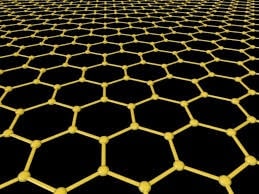
-Investment of €762 million in carbon fiber
The manufacturer of fibers Hyosung Corp., Seoul/South Korea, plans to increase its annual output of carbon fiber from 2,000 to 24,000 tons by 2028 with a total investment of KRW 1 trillion (€762 million) by 2028.
With the first expansion underway, the company plans to complete a carbon fiber plant with an annual capacity of 2,000 tons in January 2020 and begin full-scale production in February. Employment is also expected to increase significantly from the current 400 to more than 2,300 new jobs by 2028. Circular Economy Graphene Biopolymers
Carbon fiber is used in applications from internal and external materials for automobiles and building reinforcements to sports and leisure sectors and advanced future industries such as space aviation. Carbon fiber has a quarter of the weight of steel but is 10 times stronger and 7 times more elastic.

-Unlocking the circular economy — Petrochemical manufacturers lead the charge to reinvent recycling
Petrochemical manufacturers are commonly known as creators of the building blocks for plastic. Circular Economy Graphene Biopolymers
But increasingly, they’re making headlines for reversing that process — turning used plastic products back into their original building-block monomers — and advancing other recycling solutions critical to addressing concerns about plastic waste.
Plastic products are vital to our lives, enabling everything from food preservation, to sanitation in health care, to technology and virtual connection, to energy innovations like solar panels and wind turbines.

-Plastic: from problem to circular resource
-Currently only 50% of plastics can be physically recycled. The rest, termed ‘End-of-Life Plastic’, is sent to landfill, incinerated or ends up in our oceans.
Almost two years after China Sword (the World’s major waste importer banning the import of foreign waste), we still need to get better at dealing with our own plastic – we can no longer ship the “problem” overseas.Circular Economy Graphene Biopolymers
At the heart of the issue is a mindset shift (a “back to the future” style thinking where resources are re-used).
We need to stop thinking of plastic as a waste and start treating it as a resource with value.
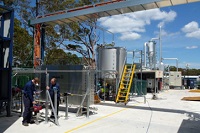
-Revised test method for antibacterial finishes on textile materials
One of the most commonly used test methods to measure antimicrobial activity on treated textiles is the AATCC TM100.
This method, developed in the 1960’s by the American Association of Textile Chemists and Colorists (AATCC), Research Triangle Park, NC/USA, and updated periodically, has now been updated to more accurately capture the performance of today’s antimicrobials that have a smaller environmental impact. Circular Economy Graphene Biopolymers
This revised method provides the industry with more consistent and uniform test results.
The revised AATCC TM100-2019 eliminates the variability on many of the critical steps that previously led to variability in test results, even on identical substrate.
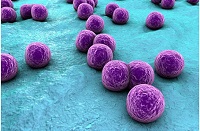
-Siegwerk and APK work together to improve the recyclability of plastic packaging
Siegwerk, one of the world’s leading providers of printing inks for packaging applications and labels, and APK AG, a specialist in the production of high quality plastic granulate from plastic waste, want to meet the challenges of plastic recycling together and further optimise the recyclability of plastic packaging working in a circular economy.
Plastic waste is one of the major issues of our time. Almost 80 million tons of plastic waste accumulate worldwide, and currently only about 10 percent of the resources used in the production of plastics are recovered through recycling. Circular Economy Graphene Biopolymers
The remaining 90 percent are incinerated, dumped or enter the environment uncontrolled.
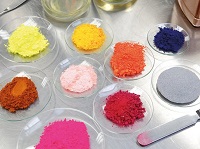
-Trinseo completes acquisition of Dow’s latex manufacturing assets in Rheinmunster, Germany
Trinseo has completed the acquisition from Dow of latex production facilities and related infrastructure at Rheinmunster, Germany. Circular Economy Graphene Biopolymers
The transaction includes full ownership and operational control of both latex production facilities at Rheinmunster, as well as site infrastructure and services contracts, and approximately 108 employees who have transferred from Dow to Trinseo.

-Toray starts production of PA and PBT at new compounding plant in India
Toray Industries, Inc. (Tokyo, Japan; www.toray.com) announced that Toray Industries (India) Pvt. Ltd. began manufacturing polyamide (PA) and polybutylene terephthalate (PBT) at a new facility in September. Circular Economy Graphene Biopolymers
Key applications for these resins include components for automotive and electrical and electronic.
This first Indian plastic compounding unit of a Japanese manufacturer should reach its full operating capacity of around 5,000 metric tons per year (m.t./yr) in the near future.
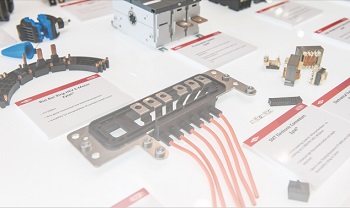
-Bioplastics maker Bio-on takes a big earnings hit for first half 2019
The stock price of Italian bioplastics maker Bio-On srl fell just over 10% on 24 July after the release of a scathing report by a US investment firm
Italy-based bioplastics maker Bio-on says its sales took a nosedive in the first half of 2019, reaching only 917,000 euros ($1 million), compared to 6.1 million euros ($6.7 million) a year earlier.Circular Economy Graphene Biopolymers
The beleaguered manufacturer of PHA bioplastic posted losses of 4.9 million euros ($5.3 million), double the loss of 2.3 million euros ($2.5 million) posted in June 2018. The final result amounted to a loss of 10 million euros ($10.9 million) against a loss of 2.9 million euros ($3.2 million) as of June 30, 2018.

-Circular economy a focus for extruder manufacturers at K 2019
Extrusion will get a full showing at K 2019 — compounding, pipe and profile, medical tubing, and even a touch of pultrusion. Bioresins and recycled materials are among the “green extrusion” highlights. Circular Economy Graphene Biopolymers
Here is a sampling of what K showgoers can see:
Coperion and Coperion K-Tron, at (Hall 14, Booth B19) will demonstrate sustainable production, with a focus on recycling and biodegradable plastics. The main themes center on simplified handling, increased efficiency and cost savings — covering both turnkey systems and the areas of compounding, pelletizing, feeding and conveying.
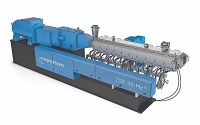
-New UPM Raflatac Smart Circle wash-off labelling solutions enable recycl-ability
UPM Raflatac continues to deliver smart, sustainable labelling solutions on its journey beyond fossils with a new range of wash-off materials for the European market.
UPM Raflatac SmartCircle™ wash-off labelling solutions respond to the growing demand for innovative ways to increase the recyclability of PET and reuse of glass packaging.
SmartCircle wash-off solutions ensure label materials will separate during the PET washing process. Circular Economy Graphene Biopolymers
An increased yield of clean, high-purity PET flakes sink to the bottom, increasing the availability of high-quality recycled raw material, reducing the need for virgin plastic.
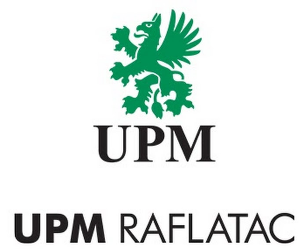
-Breakthrough Technology Takes Plastic From the Ocean and Uses It in a Coca-Cola Bottle
Today, The Coca-Cola Company unveiled its first-ever sample bottles made using recovered and recycled marine plastics, demonstrating that, one day, even ocean debris could be used in recycled packaging for food or drinks. Circular Economy Graphene Biopolymers
This sample Coca-Cola bottle is the first-ever plastic bottle made using marine plastic that has been successfully recycled for food and drink packaging.
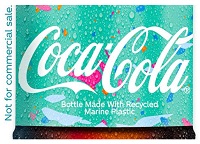
-Japan’s JXTG expands use of Argus PX prices
Japan’s JXTG Nippon Oil & Energy, the world’s largest merchant seller of paraxylene (PX), has changed the pricing basis for its 2020 term contracts to rely more heavily on Argus cfr Taiwan and China spot assessments. Circular Economy Graphene Biopolymers
The company has offered its term supplies for next year on a 50pc Argus, 50pc Icis basis. It previously priced its PX sales on a 50pc Platts, 25pc Argus and 25pc Icis weighting.

-INEOS mulls Seal Sands ACN plant closure
INEOS is mulling the closure of its Seal Sands, UK, acrylonitrile (ACN) plant due to the level of investment that would be needed to make the site economically viable, the Switzerland-headquartered producer said on Thursday.
INEOS employs 224 people at the site, although not all those jobs would necessarily go if the company decides to close the ACN unit, as some workers could be reassigned to other operations at Seal Sands, it said. Circular Economy Graphene Biopolymers
The ACN plant has a production capacity of 280,000 tonnes/year.

-India’s EPDM demand falls on auto industry slump
India’s demand for ethylene propylene diene monomer (EPDM) is expected to remain weak because of the slump in the automotive industry amid a sluggish economy.
Declining feedstock ethylene costs and ample supply of cheaper EPDM from the Middle East and Europe also weighed on demand and exerted downward price pressure.
On 2 October, EPDM prices fell to $1,600-1,650/tonne CFR (cost & freight) India, down by $100/tonne from the previous week. Circular Economy Graphene Biopolymers
Ethylene spot prices were at $775/tonne CFR northeast (NE) Asia on 1 October, down by about 15% since early August, ICIS data showed.
